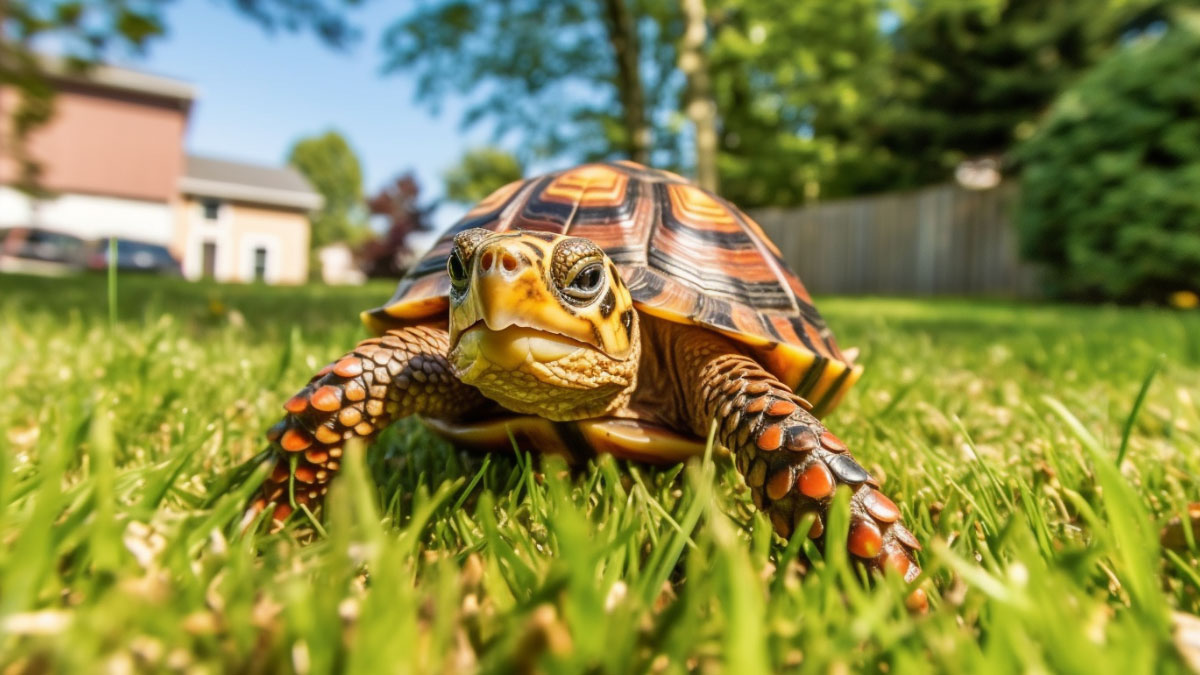How To Take Care Of Turtle Eggs?
Taking good care of your turtle eggs increases their chances of surviving and hatching into healthy baby turtles. However, you may not know how to go about this process if you don’t have a lot of experience with turtles. Luckily, this article will help you out.
How to take care of turtle eggs? The best way to take care of turtle eggs is by putting them in a suitable incubation environment. The eggs usually require a humid and warm environment throughout the incubation period. Regularly monitor the eggs and keep the temperature and humidity consistent to increase their chances of hatching successfully.
In this article, we’ll explore further how to take care of turtle eggs. We’ll discuss what to do if your turtle lays eggs in water, how long the eggs take to hatch, how to check if the eggs are alive/healthy, how to hatch them without using an incubator, and other helpful info.
How to take care of turtle eggs?
Contents
Once your turtle lays her eggs, her job is done. She won’t show any additional parental care to the eggs. You have to do the rest of the job by ensuring the eggs stay safe and hatch into baby turtles.
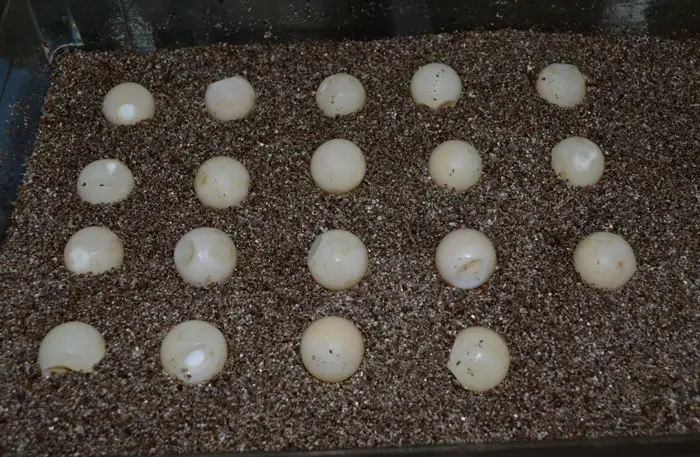
In this case, you’ll need to provide them with a suitable incubation environment to enable them to hatch successfully.
Here are some helpful tips on how to take care of the eggs:
Mark the eggs
The first step is to take the eggs and transfer them to a place where they’re safe. However, before you touch or move the eggs, you’ll need to gently put a mark on the top part of each of them.
This way, you’ll avoid turning or rotating them when you transfer them to the incubator or any other safe place.
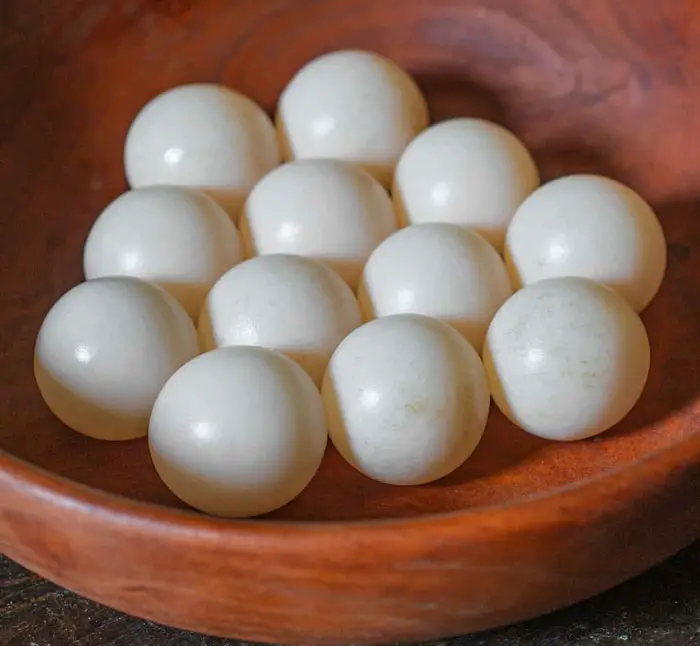
The reason the top part should stay so is that the embryos tend to attach to the top part of the egg when they start developing.
Turning the egg upside down can, therefore, hurt the embryo and bring about deformities or cause the eggs not to hatch.
The transfer process should also be carried out carefully as the shells are quite delicate and can break easily.
Where to store the eggs:
The best way to store your eggs is to put them in a cool place where the temperature and humidity levels stay consistent.
The area you store your turtle eggs shouldn’t be too wet or dry.
You can safely put the eggs in a small container filled with Styrofoam or a plastic container filled with moist peat moss or vermiculite substrate.
Transfer the eggs somewhere safe
Now you will need to transfer your eggs to the container you prepared above. You can move them with your hands but do it gently.
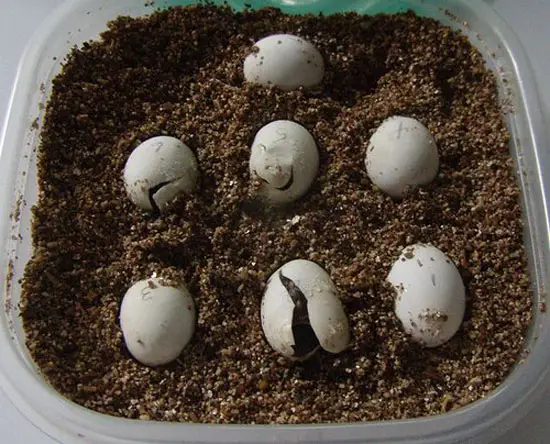
If you do not think your hands are gentle you may consider scooping them with a large spoon or net—whichever feels more comfortable.
Incubating the eggs
Now that your eggs are safe, all that’s remaining is to put them in the incubator (assuming you already have one).
You can put the eggs in the incubator while still in their plastic or Styrofoam container.
However, some incubators come with their own containers/trays for eggs, so you may need to transfer the eggs there. In this case, you want to ensure the marked side stays up.
Once your eggs are inside the incubator, set the correct temperature (80 to 85 degrees Fahrenheit) and humidity (80%).
Then, give the eggs time to hatch and they will be ready to emerge out of their shells in about 2-3 months.
How to take care of turtle eggs without an incubator
If you do not have an incubator, you can come up with a DIY incubator for hatching your turtle eggs. This project is cheap and easy and requires simple materials such as plastic or Styrofoam containers and a few other items around your house.
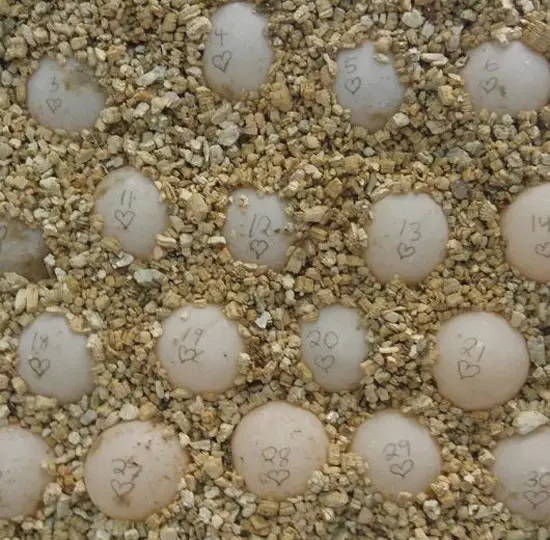
To make a DIY turtle eggs incubator:
Step 1. Find a plastic container at home that can accommodate all the eggs you have at hand. Put some holes on top of the lid of this container to allow air to circulate.
Step 2. Prepare the ideal incubation medium where you’ll put the eggs. The most common substrates to use include peat moss, sphagnum moss, and vermiculite. Different soil combinations and moss mix or sand can also work.
Step 3. Put the substrate in the container and add water. The idea is to make the resulting medium appear wet, but you shouldn’t overdo it.
Step 4. Make some holes in the substrate where you’ll bury the eggs. Do not completely bury the eggs, though. Leave up to 1/3 of them exposed to the air. This makes it easy for you to observe the eggs and humidify them.
What to do with turtle eggs in water
If your turtle lays her eggs in water, we advise you to remove them as soon as possible and place them in a suitable incubation environment.
Turtles naturally lay their eggs on land. When submerged in water, they can easily drown or get damaged.

Use your hands or a small container to gently remove the eggs from the water and be careful not to jostle or rotate them. Carefully wipe off any excess moisture with a paper towel or a soft cloth.
Now put the eggs in a container with a suitable substrate such as peat moss or vermiculite that is moist to achieve high humidity levels.
Place this container in a warm and humid environment and give the eggs time to hatch. Make sure you monitor them regularly but avoid handling or rotating them as much as possible.
How long does it take turtle eggs to hatch?
The length of time it takes for the turtle eggs to hatch generally depends on the species. However, the average duration for most species is around 45 to 90 days.
However, some environmental factors also tend to influence the hatching period.
For instance, high temperatures usually result in shorter incubation periods while lower temperatures can make the eggs take longer to hatch.
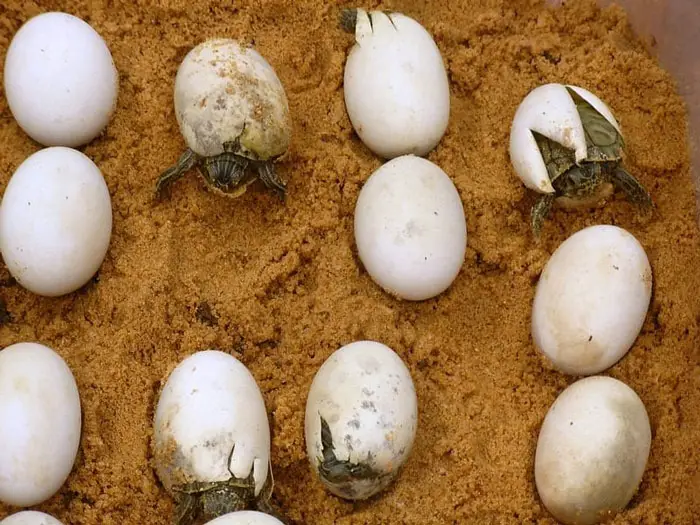
How to tell if turtle eggs are fertile?
You can use a process known as candling to check if your turtle eggs are fertile. This method involves shining bright light through your eggs shell to illuminate the content inside it.
If you see a network of veins as well as a dark spot near the eggs center when you hold the eggs up to the light, it means they’re fertile.
Otherwise, if you see contents that are clear with an almost uniform color, then the eggs are infertile.
Note that you should candle eggs that are 10 to 14 days old from the time of candling. This is enough time for the embryo to start developing and the eggs to become visible.
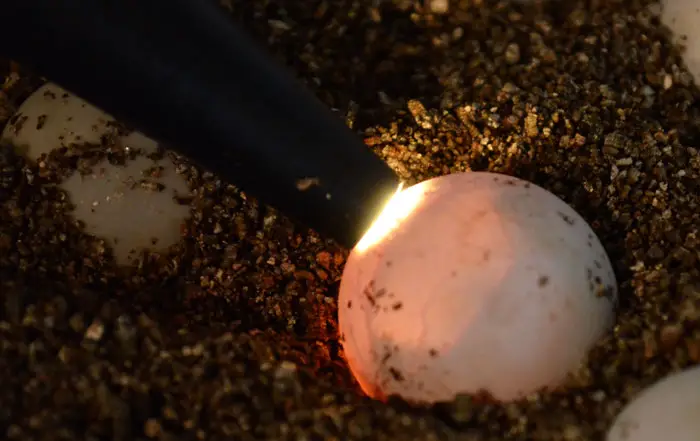
Conclusion
Taking care of your turtle eggs is important if you want them to stay healthy and hatch into baby turtles. This article has just outlined full details on how to take care of your egg turtle, including tips and precautions to keep in mind. Ensure you don’t jostle or rotate the eggs as the embryos inside are quite sensitive and may not hatch if disturbed, or may develop deformities.
You can hatch the eggs in a ready-made incubator or you can come up with your own DIY incubator at home. Make sure the temperature and humidity remain consistent throughout. The eggs usually take 2-3 months to hatch, depending on the species, so you should be patient with the whole process.

